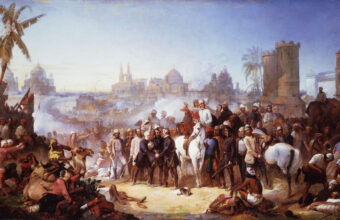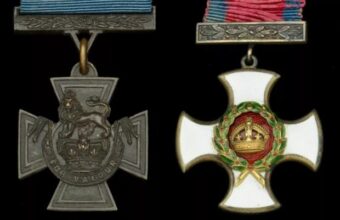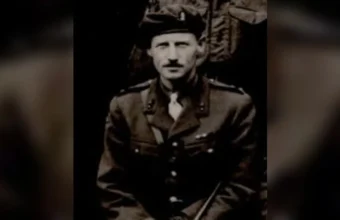The first Victoria Cross awarded to Royal Navy personnel in World War I was sold yesterday, July 23, for £240,000 in London.
The medal was won by Henry Peel Ritchie on November 28, 1914, for his heroism on board HMS Goliath at Dar-es-Salaam in East Africa, now Tanzania.
The medal was sold by Noonans. It was part of the collection of the late Jason Pilalas, an American medal collector. The first part of the sale of the Pilalas collection included 250 medals, all of which were sold for £1.8 million.
Henry Ritchie was 38 years old when he was shot eight times as he tried to steer his vessel to safety under heavy fire.
Christopher Mellor-Hill, Head of Client Liaison at Noonans, said: “The price achieved in today’s sale reflects the bravery and gallantry of Ritchie and the importance of the Victoria Cross. It was also the first Naval VC of WW1 when the Navy was very busy blockading German East Africa and hunting the German battleship SS Konigsberg.
“It was active competition between a bidder on the phone and a commission bidder, the medal was purchased by a private collector.”
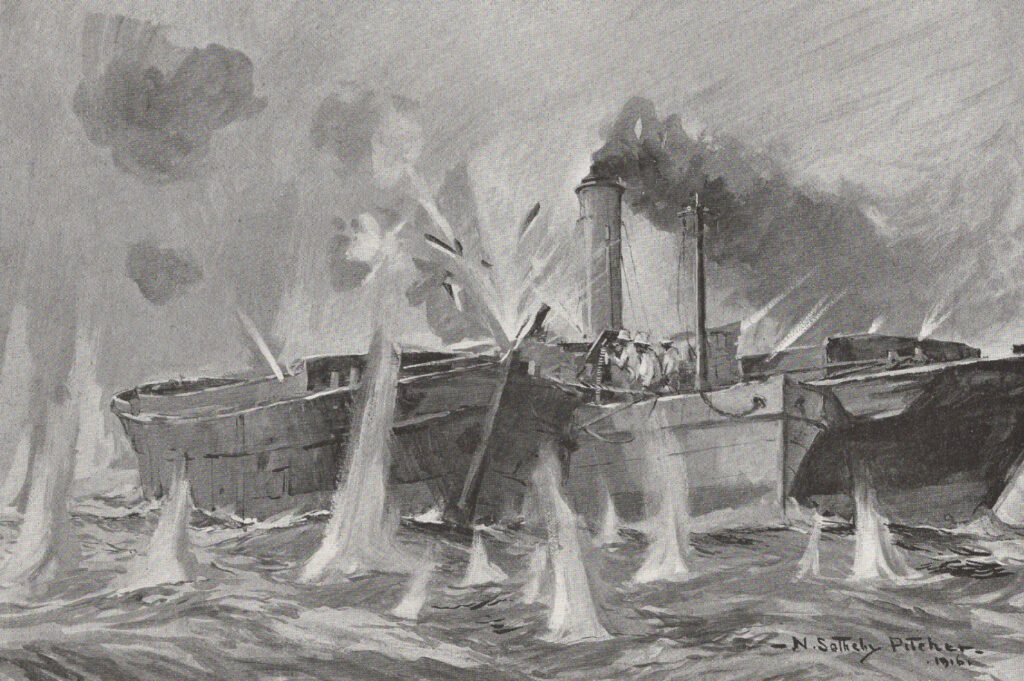
A contemporary illustration of the action in which Ritchie won his Victoria Cross, suffering terrible injuries in the process. Image courtesy Noonans.
Ritchie was awarded his VC at Buckingham Palace by King George V on April 24, 1915. He returned to light duties, then to active duty, but was invalided out of the Royal Navy in early 1917. He died in Edinburgh, aged 83, in 1958.
Jason Pilalas was an American collector whose own naval career inspired him to assemble one of the most important collections of Royal Navy medals known.
Sold alongside Ritchie’s VC were:
10 medals awarded to Lieutenant Commander William Ewart Hiscock which sold for £140,000. Hiscock was a mining officer who defused many mines during the World War II Siege of Malta. Tragically, he was killed in an air raid along with his wife days after the award of his George Cross.
Also a Naval Gold Medal awarded to Vice-Admiral Sir William Mitchell, KCB of HMS Isis, which fought against the Dutch navy at the battle of Camperdown in 1797.
Militaria is reliably collectible and the best quality medals are very highly prized.
Victoria Crosses are the most valuable medal awarded by the UK.
All of them are worth large amounts. Those which tell particularly compelling stories are the most sought after.
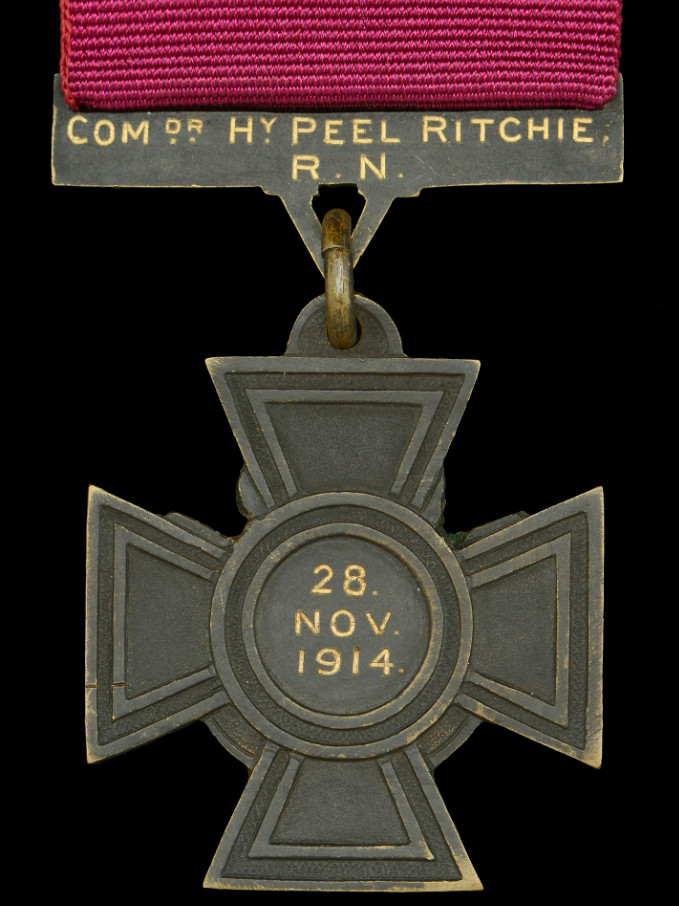
Ritchie’s medal shows that VCs are surprisingly plain objects in their own right.
In 2022 a VC awarded to Irishman Thomas Kavanagh sold for a world record £930,000. It was the first awarded to a civilian, in 1857 in India.
Last year, the VC won by Australian John French was sold for approximately £750,000.
The number of VCs is known (1,364 medals awarded to 1,361 individuals) and their sale is tracked.
Many – like the Ritchie award – are sold with collections so it’s not possible to give a precise value to the VC.
A high proportion are in museum collections. One of the most significant buyers of recent years has been Lord Ashcroft, most of whose collection is on loan to the Imperial War Museum.
Selling medals can be a difficult personal decision for the families of their recipients. And it can be controversial.
The VC awarded to Arthur Scarf, posthumously, was bought for the RAF Museum in 2023, but only after Government intervention to stop it going abroad and a £660,000 fund-raising campaign.
The widow of Stan Hollis, who won a VC in Normandy in 1944, received considerable abuse after she announced – in accordance with her late husband’s wishes – that she was selling his medal in 1982.








